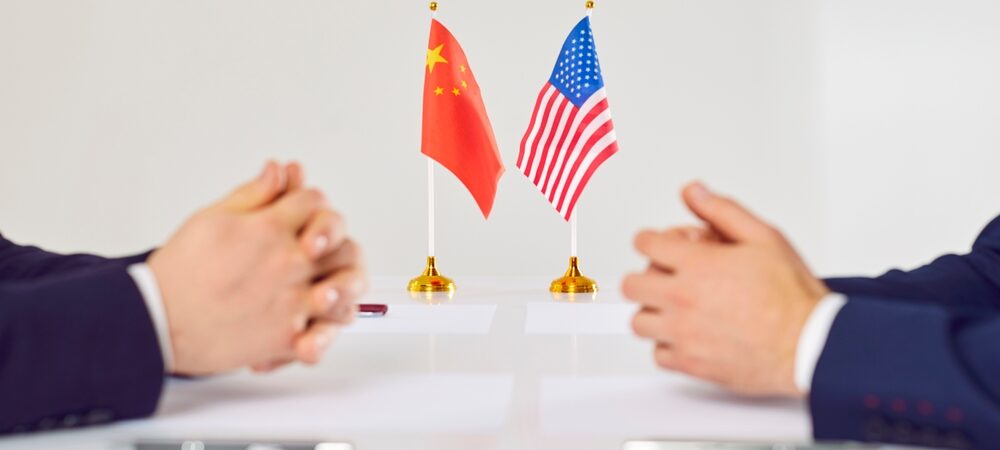A more assertive Chinese negotiating team, a lack of simple solutions and serious time constraints are a challenge to advancing the talks
With the tariff truce extended to November 10, US and Chinese negotiators can now focus on shaping a trade deal in the lead-up to a possible summit between US President Donald Trump and Chinese President Xi Jinping this autumn. While engagement has occurred at senior levels since the first meeting in Geneva, Switzerland, several months ago, it appears that much of the discussion since then has centred around ensuring the smooth flow of Chinese critical minerals and magnets to the United States.
Now, negotiators need to pick up the pace and take a detailed look at other issues that could be part of a future agreement while recognising that there are no easy solutions.
The positive news is that both sides, to varying degrees, seem to want a deal that helps to stabilise the bilateral relationship. Quick tariff escalations that occurred earlier made both sides realise that tensions had gone off the rails. Officials point to the phase one agreement concluded during Trump’s first term as evidence that bilateral deals are possible, even in an environment where strategic competition prevails.
But Beijing has learned important lessons from those earlier negotiations, which relatively favoured Washington’s interests. Since then, China has taken steps to avoid a repeat. Beijing is thus likely to insist on a more balanced agreement this time, meaning it will request concessions from Washington in areas such as the relaxation of export controls and the lowering of tariffs.
Second, China has successfully reduced its dependence on the US as an export market since 2017, with exports to the US in 2024 only accounting for 14.7 per cent of its total, down from slightly over 19 per cent in 2018. It has turned to other partners to help fill its import needs, including Brazil, now its largest soybean supplier.
Finally, it has built out a toolbox going way beyond tariffs to respond to what it considers to be unjustified US measures. Under its export control law, which mirrors US policies in important ways, China has restricted its exports to the US of critical minerals and magnets. Beijing has shown it is more than willing to use this leverage to create more favourable negotiating conditions.
In addition to a more assertive Chinese negotiating team, serious time constraints are a challenge to advancing this new round of talks. Keeping in mind that the phase one agreement took well over a year to achieve, negotiators now only have 2½ months to undertake a similar exercise. In the trade world, this is an extremely small window to negotiate a meaningful and enduring deal.
Moreover, potential negotiating agenda items do not lend themselves to simple solutions. For example, China’s manufactured excess capacity is a bilateral and global problem, but addressing this challenge is complex.
It calls for a package of policy responses, including Chinese voluntary export restraints in key sectors, US import restrictions beyond high tariffs and measures to strengthen consumer demand in China. Transforming these and other policy prescriptions into a binding trade agreement takes time and creativity.
Unlike past negotiations, US export controls on important technologies are likely to be on the table this time. In recent months, the Trump administration has opened the door to such Chinese requests, such as allowing the Nvidia H20 advanced chip to be shipped to China.
This effectively reverses decades-long bipartisan policy of avoiding negotiations on matters related to national security. Sorting out which controls might be negotiable and which must remain off limits will be no easy task. Moreover, the talks may also encompass matters such as Russian oil exports to China and fentanyl precursors, which would require precious negotiating time.
Finally, Beijing is not as hungry for a deal as the US seems to be, meaning that it is likely to drive a hard bargain. Unlike other trading partners who were determined to reach a deal with the US before the 90-day pause on “Liberation Day” tariffs ended and the subsequent extension period passed on August 1, China seems far less pressed about inking a deal. The current tariff truce could be extended again regardless of whether a deal is at hand.
Any US-China trade deal concluded this autumn is likely to be heavy on high-level political commitments, but light on the details necessary to ensure smooth implementation. Judging from recent agreements with Japan, the European Union and South Korea, Trump seems to be most interested in commercial announcements with large price tags, including mega purchases of American farm goods, energy resources and aircraft, as well as commitments to increase foreign direct investment.
Relying on one-time commercial actions to rebalance the US’ bilateral relationship with China will only sow disappointment and frustration for both sides. Commercial announcements must be accompanied by structural and rule-based commitments if any deal is to be effective and long-lasting.
Over the past three months, the Trump administration has faced challenges as it negotiated with multiple trading partners. Some were overcome, resulting in trade framework deals with countries such as Vietnam, Japan and South Korea. In other cases, the obstacles precluded the successful conclusion of an agreement, resulting in higher tariffs for those partners, including India and Switzerland.
Those challenges largely pale in comparison to what’s in store for US negotiators tasked with making a deal with China. To achieve success, they must be firm but also creative. And they must be willing to walk away if the deal on the table is not heading in the right direction.
To read the opinion piece as it was originally published by the South China Morning Post, click here.


